We increased our pace during our last two weeks in Arequipa and luckily the weather did get a little bit nicer for sightseeing. In addition to the Colca Canyon tour I described in my last post, we also had a chance to see the famous Santa Cristina convent and take a Ruta Sillar tour. And of course we ate lots more delicious Peruvian fusion food. Here are the highlights from our last two weeks in Arequipa.
Monasterio de Santa Catalina
Though named a monastery, this beautiful 16th-century colonial complex is definitely a convent. It is located just on the edge of the main center of Arequipa and is like a little city (ruins) within the city. We greatly enjoyed seeing the displays, walking the little streets, and exploring the many living quarters. We even caught a glimpse of a nun hanging laundry on the roof of the nextdoor building, since Santa Catalina is an active convent, though the historic part is now a tourist attraction. We spent much longer than we expected here – around 2 hours. It was a really enjoyable morning.
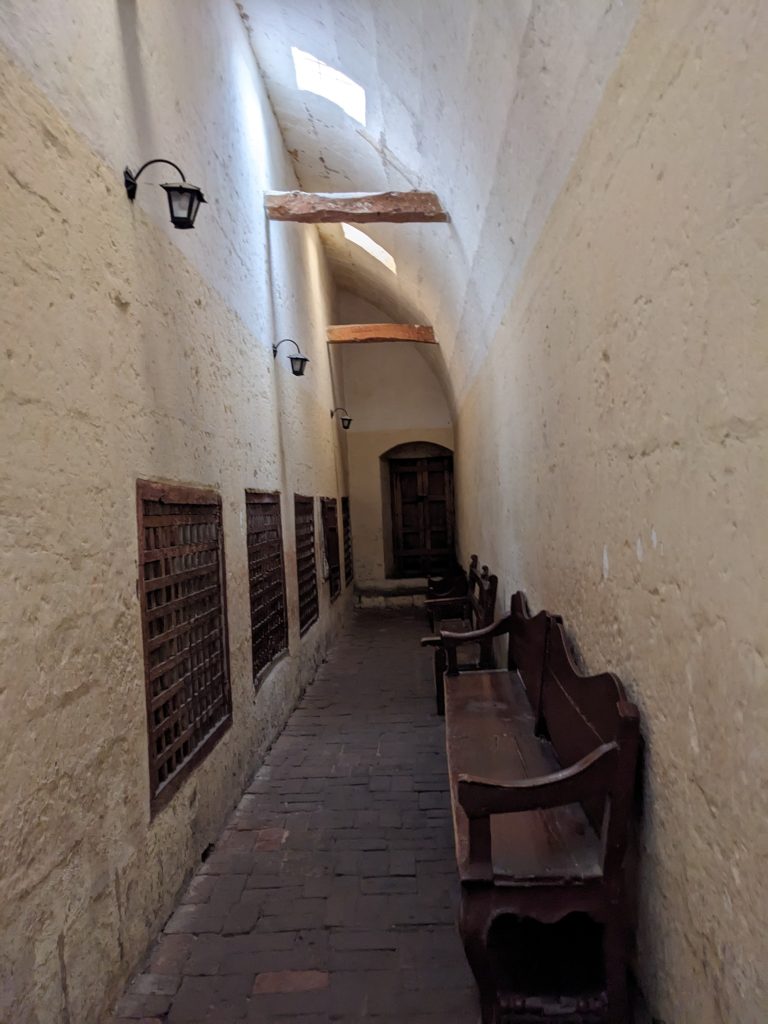
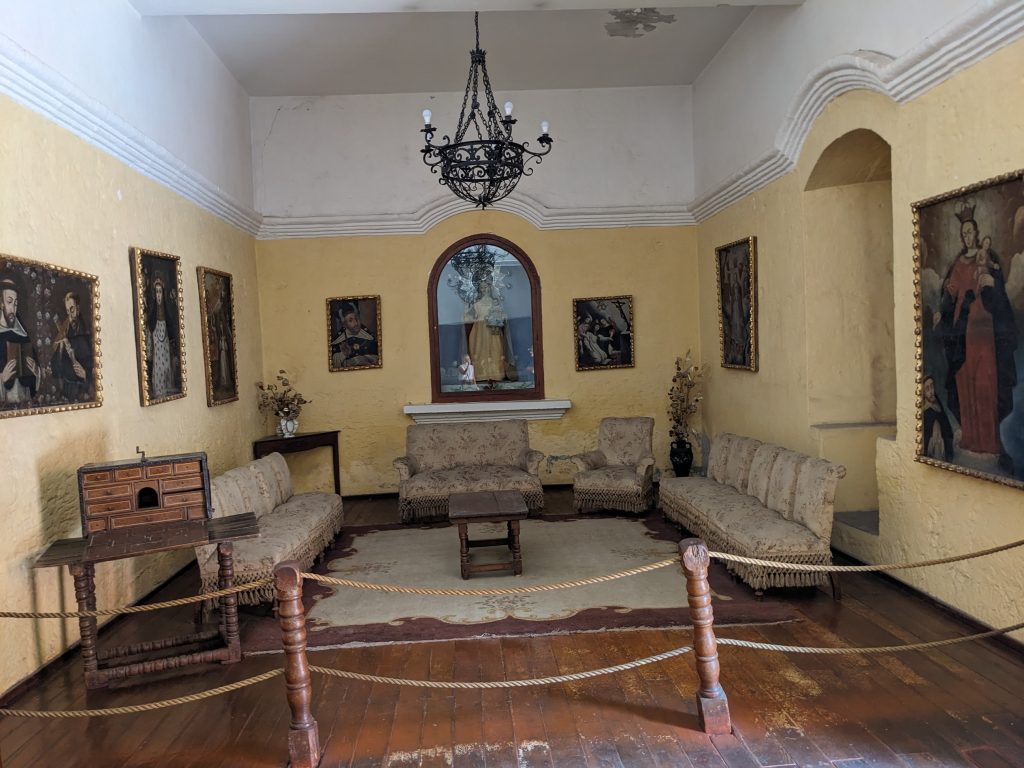
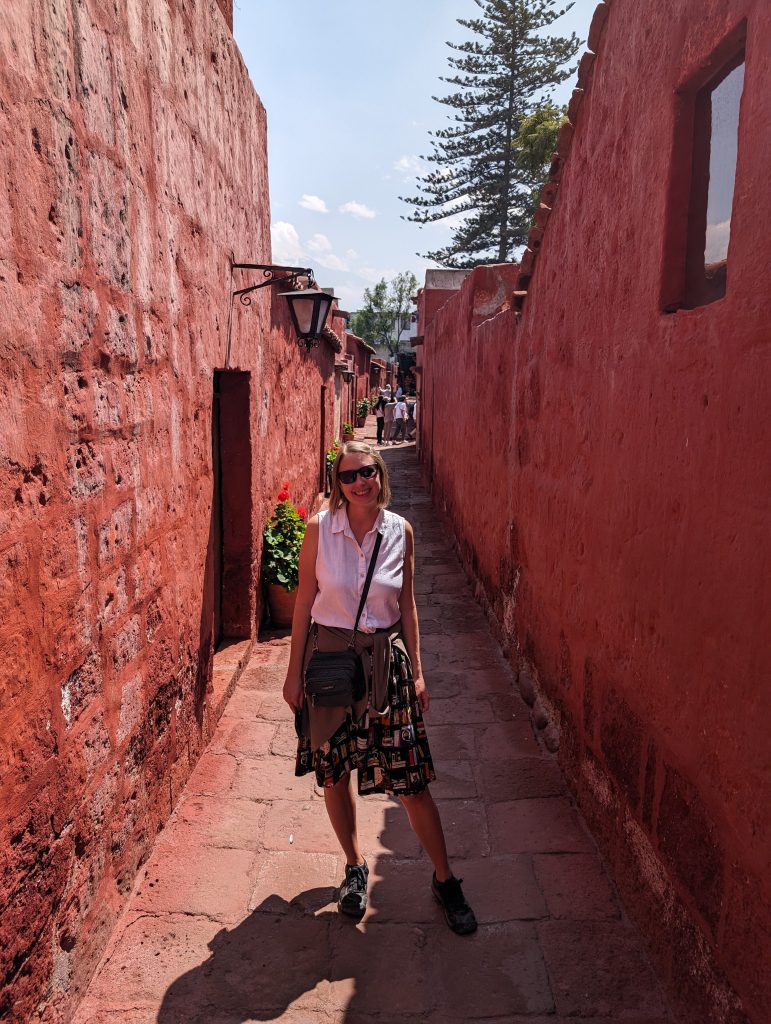

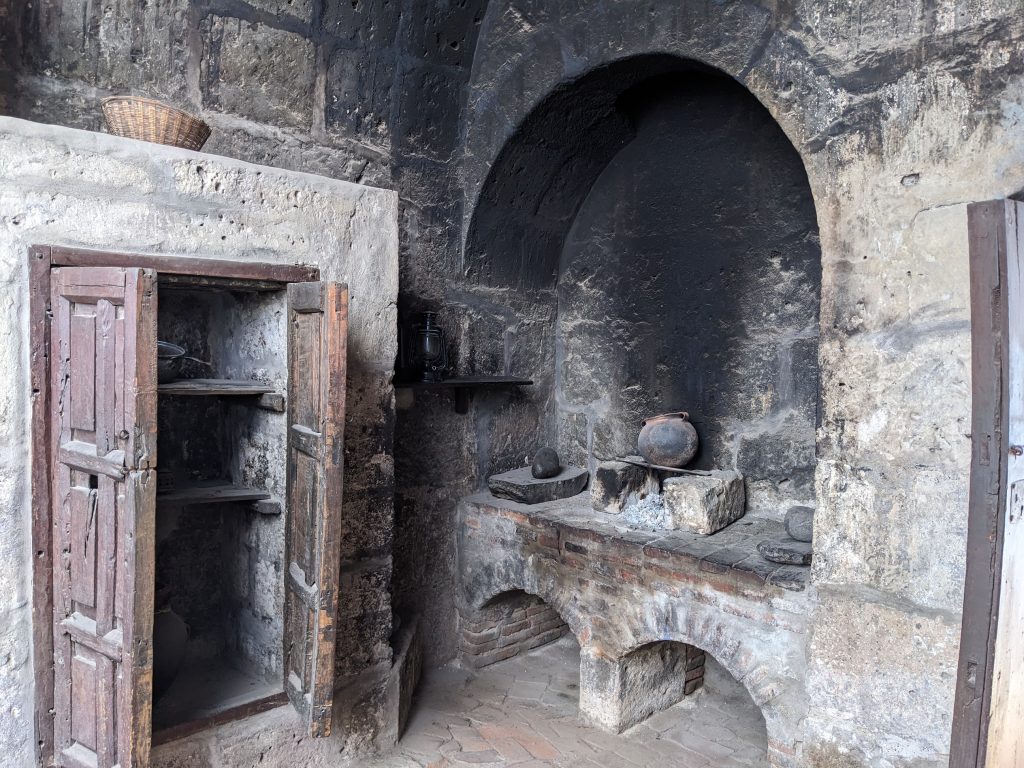



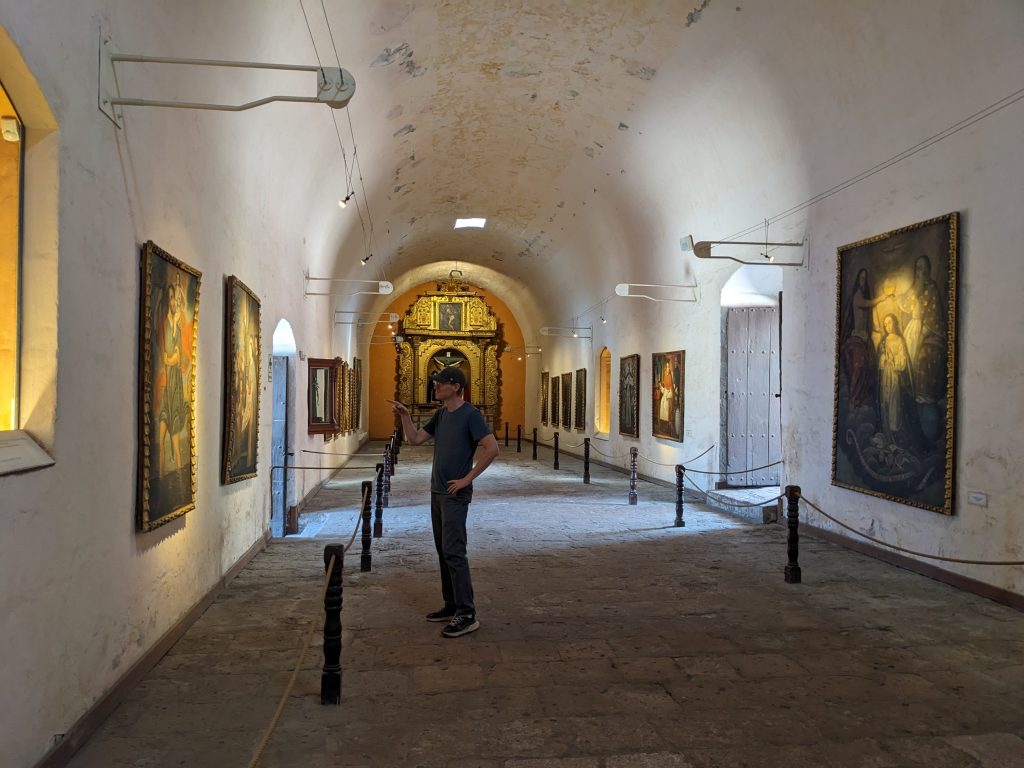

Ruta Sillar tour
We also had the opportunity to take an afternoon tour to see where all of the white stone (called sillar in Spanish, or ashlar in English) that built Arequipa came from. We booked the tour for $10 each through Airbnb Experiences.

The first stop on the tour was actually our own neighborhood (though we first met the tour at the main square in Arequipa, not knowing for sure it would be stopping in Yanahuara). The guide was able to share with us a little about the history of the Yanahuara district and our local church, which has lovely detail of Peruvian flora and fauna around the outside, which we’d seen but not really appreciated. Of course, the main attraction of our plaza was supposed to be the view of Misti and the other volcanoes, but these are always shrouded by clouds in the afternoon.
Finally we were off to drive about an hour outside of town to one of the big quarries to learn about the sillar stone. The stone was formed from the ash of the many volcanoes in the area. To make it more of an attraction for tourists, the area was filled with sculptures to be fun photo opportunities. In addition to the main parts included in the 5 sole entry fee, we also paid a little extra to visit the special nativity display and the area they call the zoo with lots of animal sculptures (3 soles each person). We had a good time walking around taking photos.


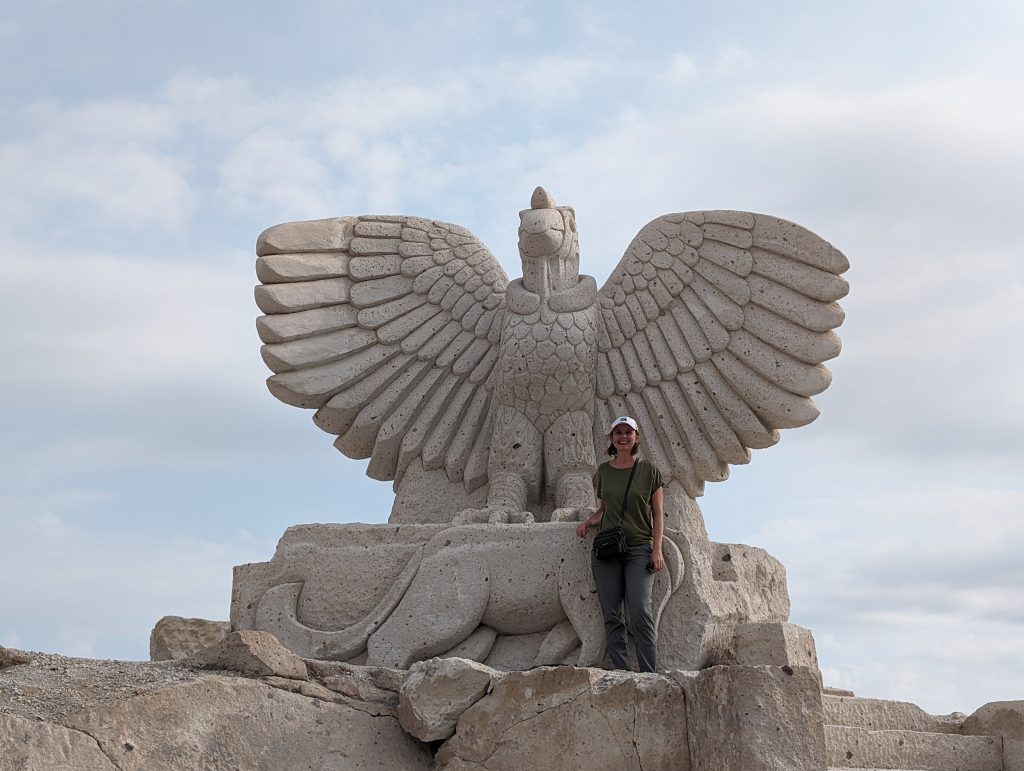

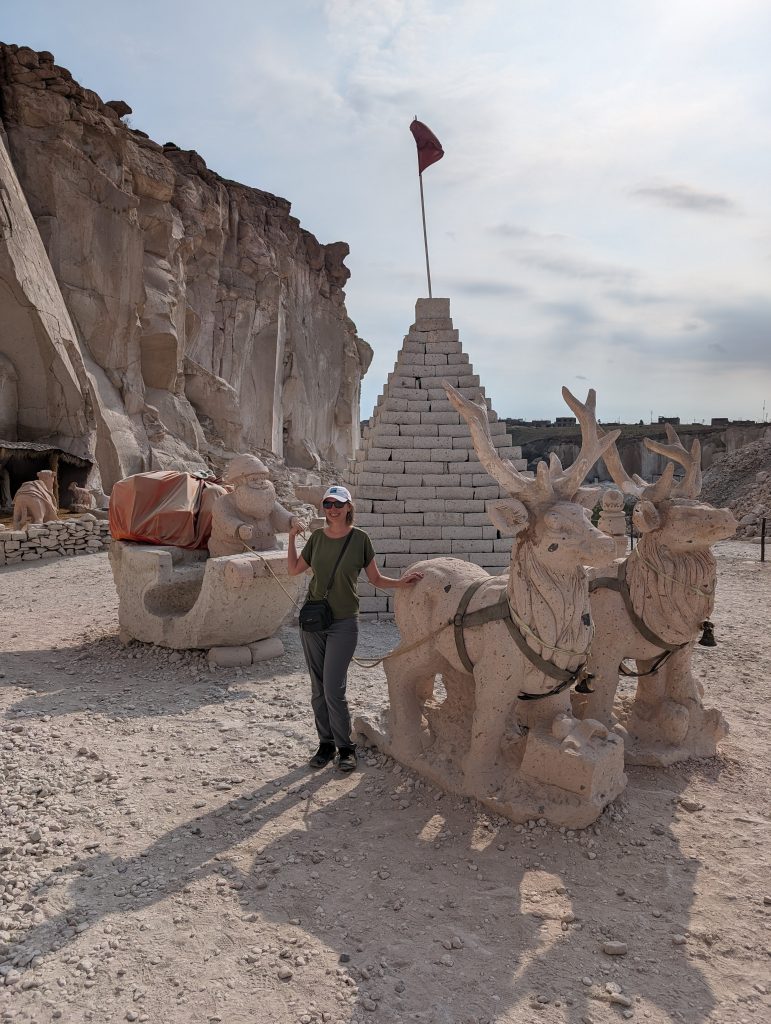
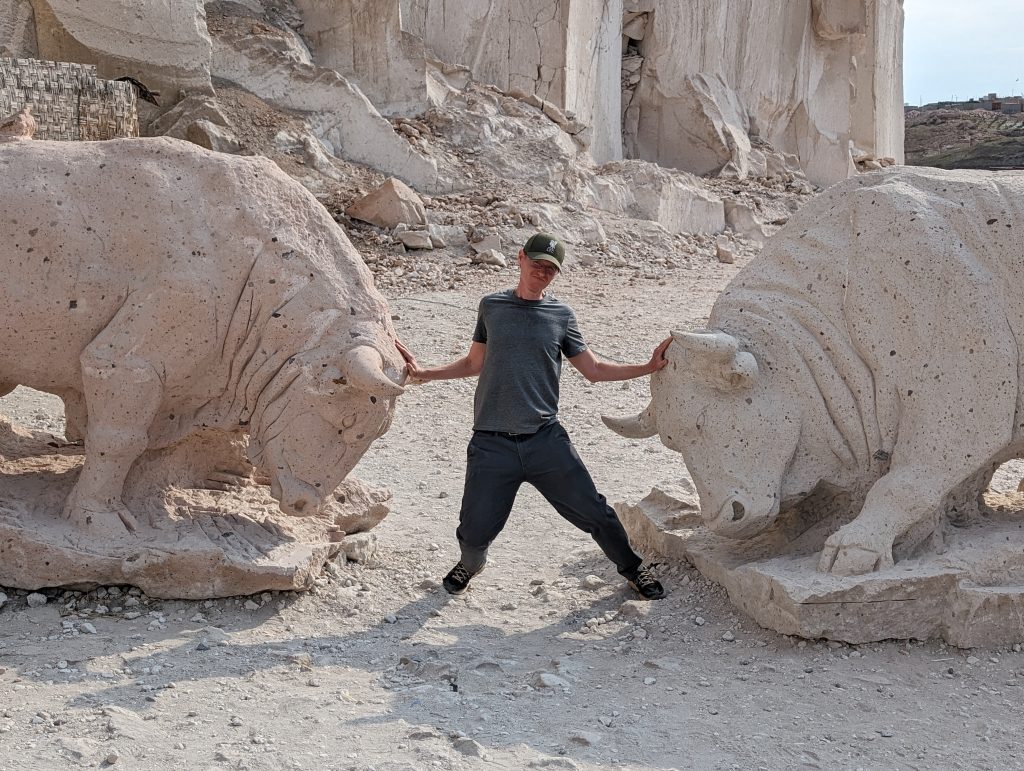
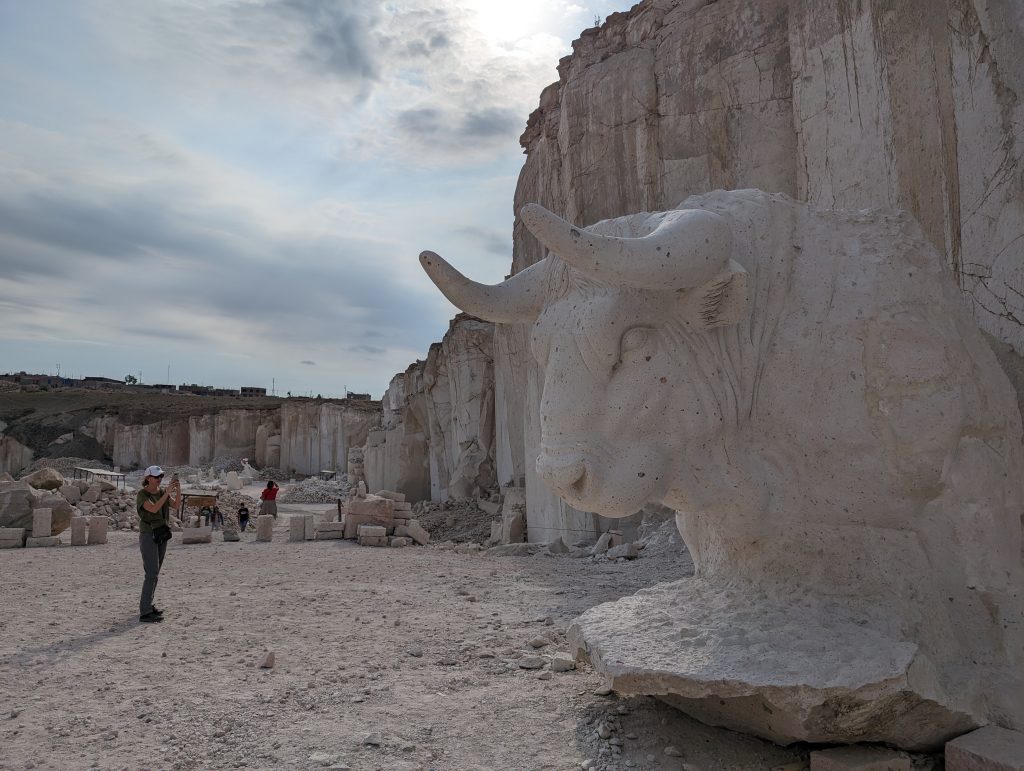

Our final stop was at Culebrillas, a small canyon that contains some ancient petroglyphs from the Wari people who lived in the area between 600 and 1200 AD. It was a lovely walk that reminded us a lot of the topography of Arizona. And the petroglyphs were definitely very cool.



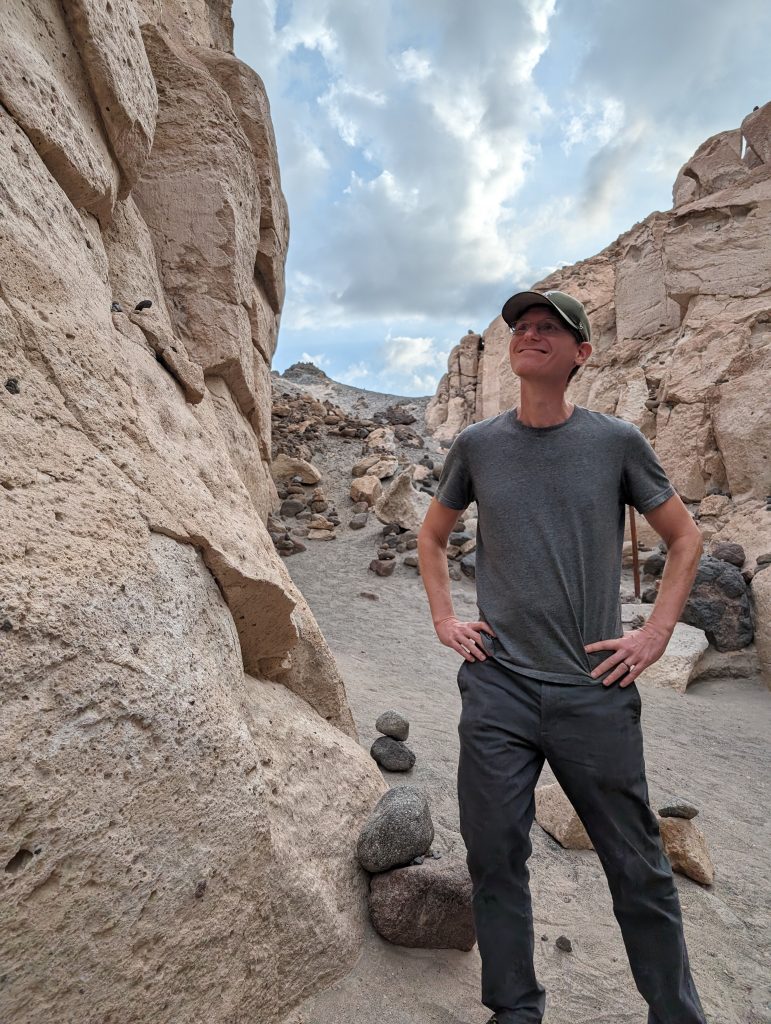
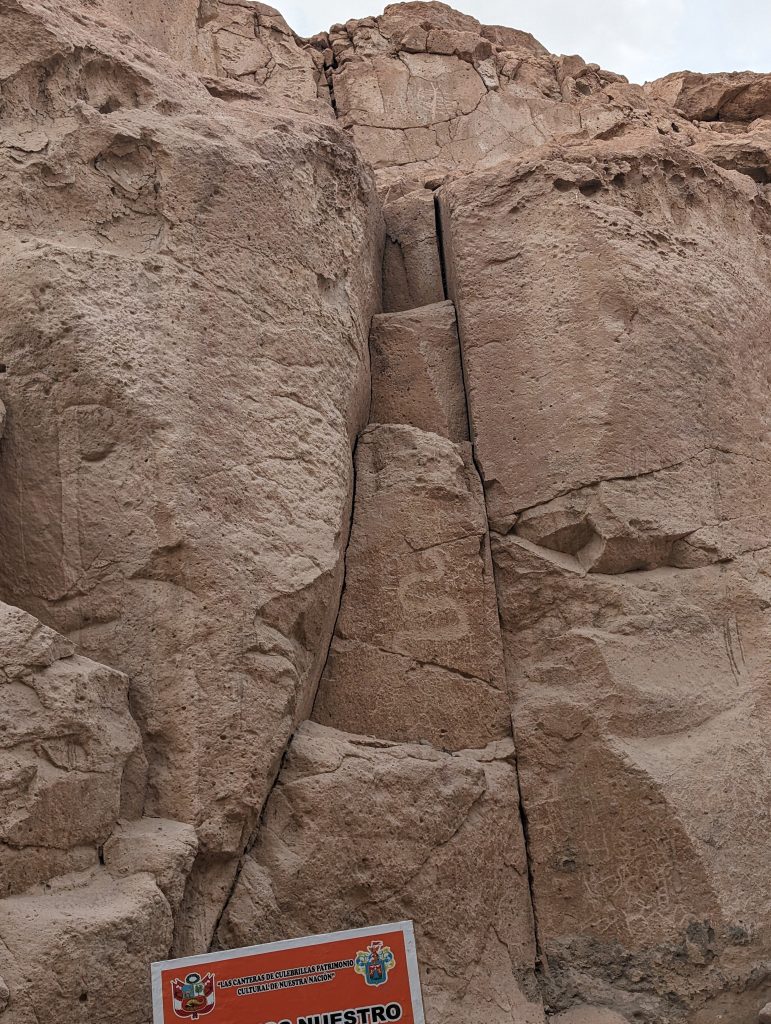


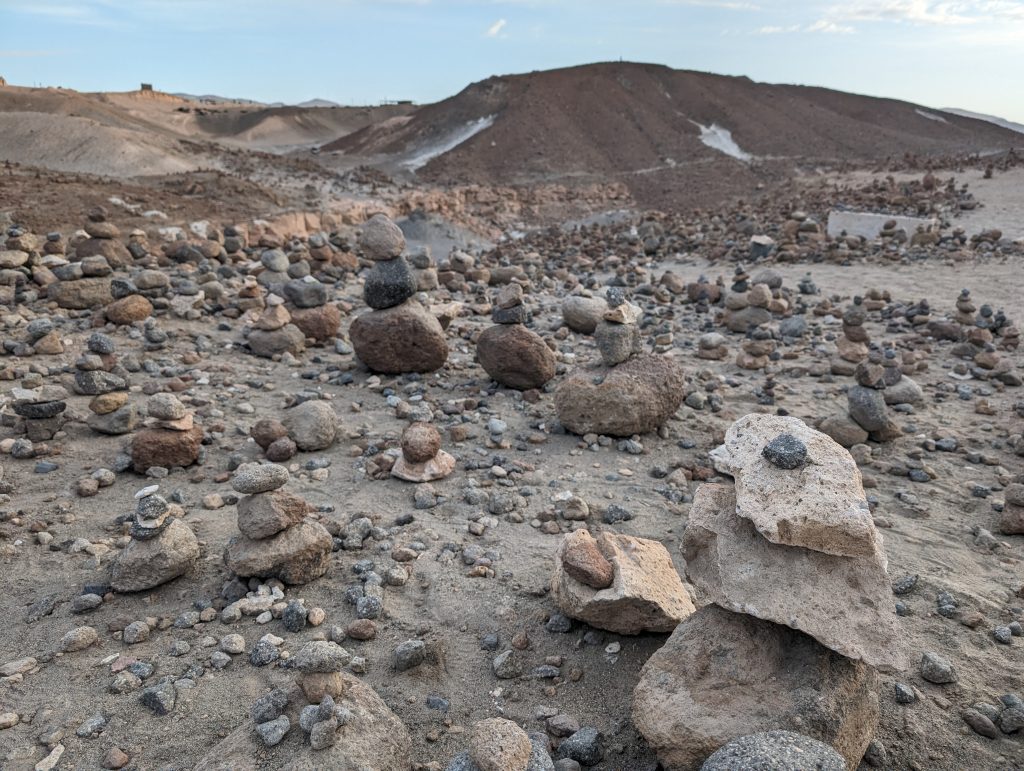
The walk ended on the other end of the parking lot where there were 100s or 1000s of stone piles, which in the local indigenous cultures are a way of making wishes. We typically know them as cairns, but in Peru they’re called apachetas. It was a very impressive display and prompted an interesting conversation with a Japanese man on our tour about how stacking rocks in this way is very common in Japan as well (we remembered seeing these on our trip there too).
The tour was a great way to learn more about the history of Arequipa and with the low cost of the tour itself and entrance fees (Culebrillas was also 5 soles each), I thought it was a great value.
More yummy food
Of course, we continued eating very well through our final two weeks in Arequipa, with more empanada picnics and delicious Peruvian foods. We brought in chifa takeout one night (Chinese Peruvian fusion) and enjoyed a brunch and another dinner at the vegetarian restaurant around the corner, Satiba. We also tried another round of nikkei sushi at a place in our neighborhood, which was even stranger than our first experience – we tried a sushi roll made with causa (mashed potatoes) instead of rice and another “traditional” roll that was topped with grilled meat. We’ve become big fans of nikkei.
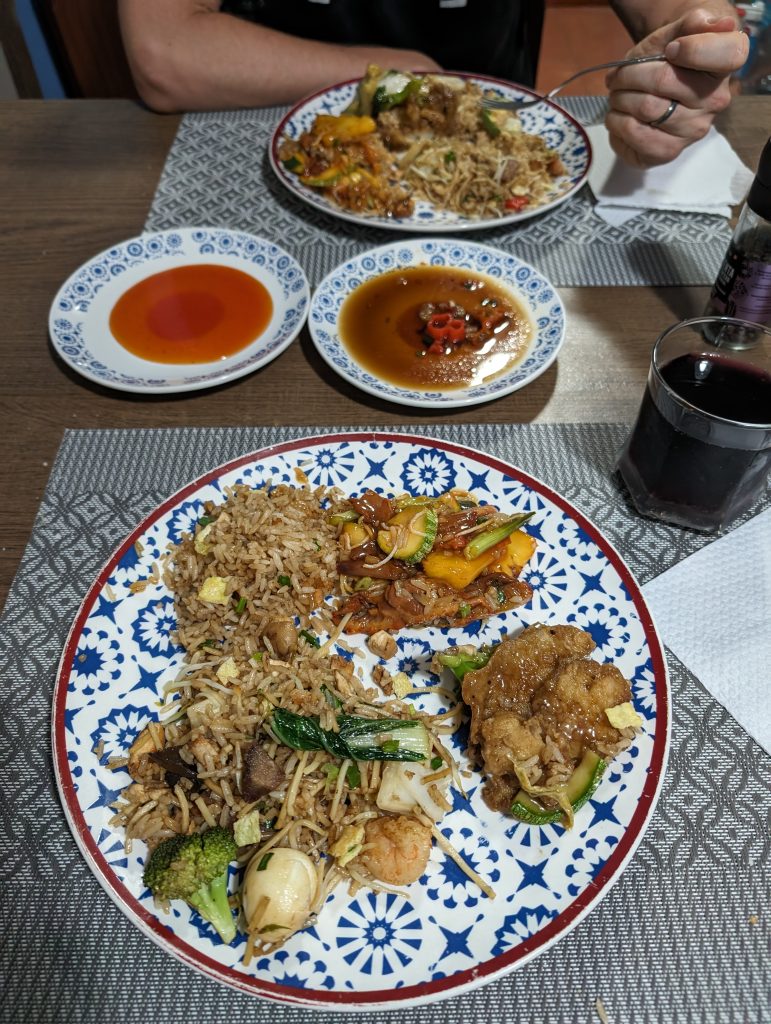

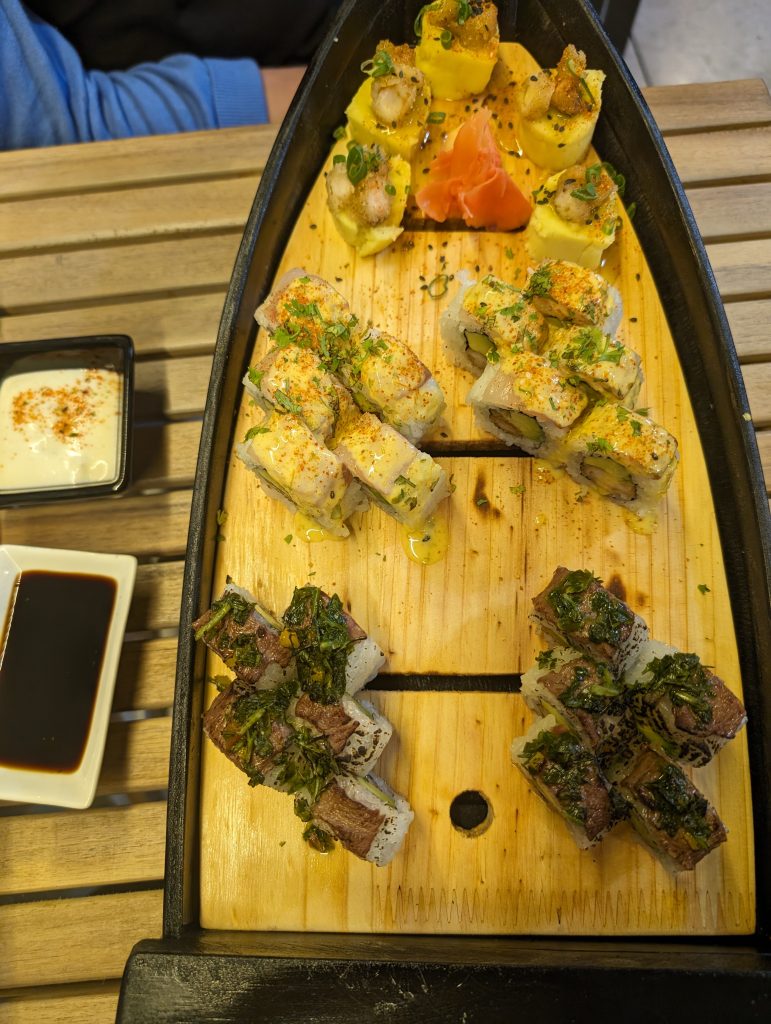
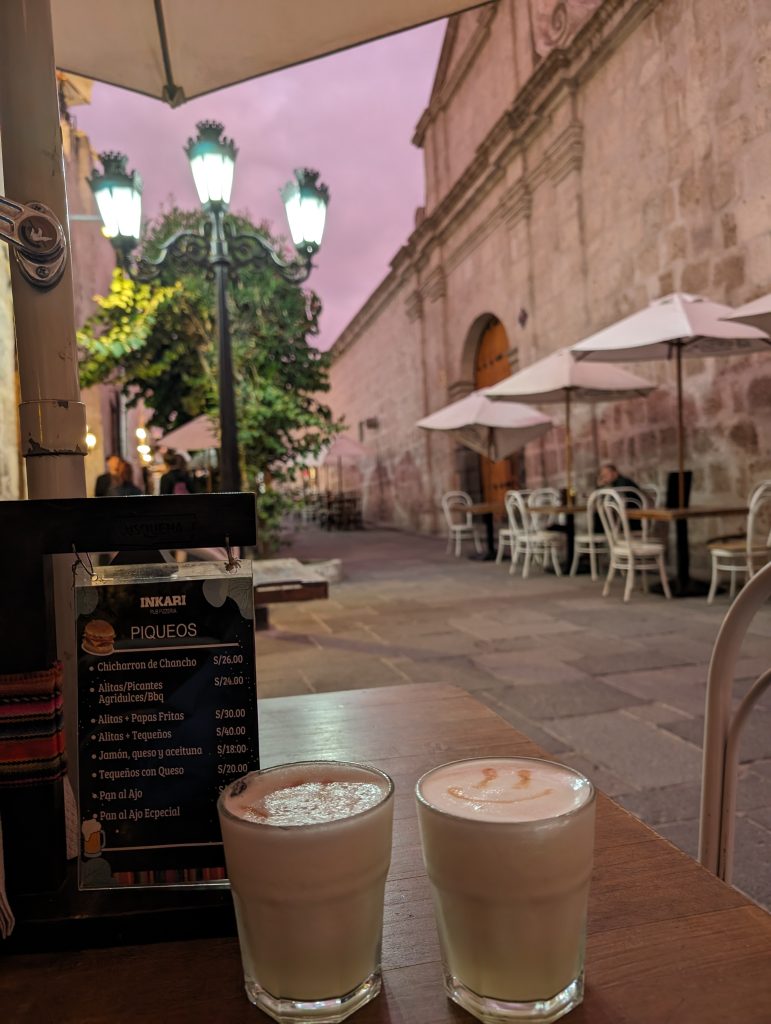
Probably our best meal during our whole stay in Arequipa (with the possible exception of my birthday lunch) was a dinner at a restaurant called Victoria Picantería Democrática, which had foods from the various periods of Peruvian history – pre-hispanic, viceroyal, republic, and contemporary. We chose an interesting ceviche-like appetizer featuring aquatic snails (lapas in Spanish, limpets in English) followed by the classic adobo stew (from the viceroyal period) for Chad and seafood soup called chupe (from the republic period) for me. As always we did a lot of sharing. Everything was delicious, interesting, and memorable.



Summary
With all the rain and not a ton of tourist attractions, four weeks was probably too long for Arequipa. But we were also extremely busy with work during those weeks and loved our Airbnb (review below and photos in my prior post), so it wasn’t a bad time and place to stay in quite a lot. We had only planned on 10 days in Arequipa for our canceled 2020 trip, which probably would have been about right. But I’m grateful for our time there, especially learning so much about Peruvian food. We’ve become big fans of this cuisine.
AirBNB Review – My husband and I loved our one-month stay in Karen’s apartment. Everything looked just like the photos. The terrace seating area was especially lovely. Great kitchen for cooking in. Wifi worked very well all the time. Karen provided great communication throughout our stay. We loved being in Yanahuara rather than closer to the tourist center (which was not a bad walk at 20 minutes or so, or an inexpensive Uber ride). Very charming neighborhood with lots of restaurants and a close walk to big supermarkets and a mall. If we return to Arequipa, we’d definitely stay here again.
